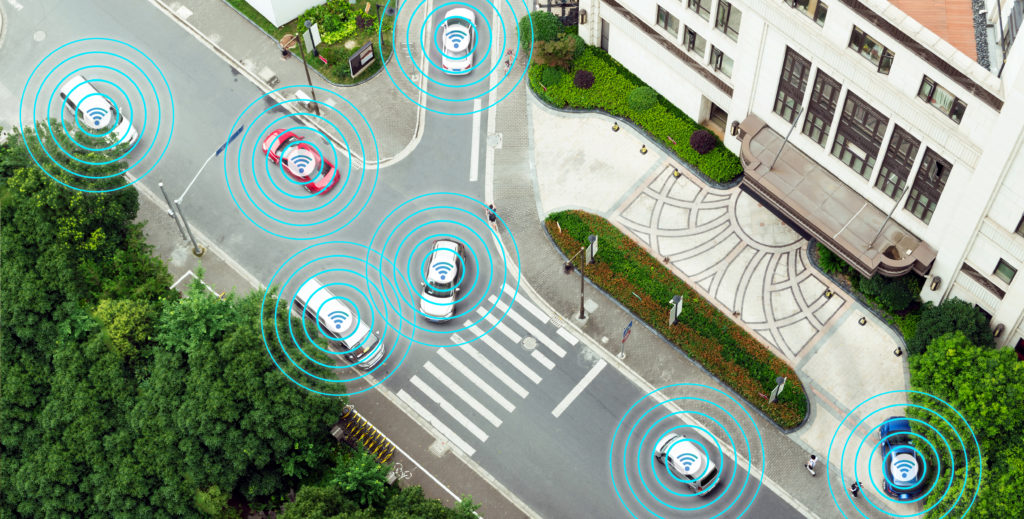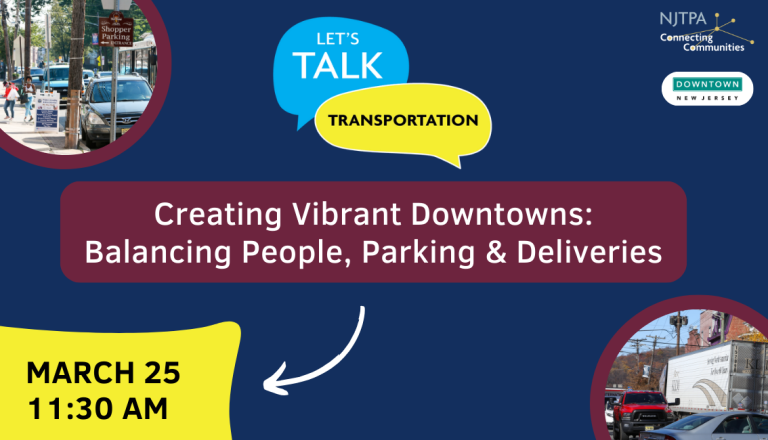Autonomous Vehicles are Coming to Your Downtown
By Krzysztof Sadlej
Urban Planner
Downtown NJ Board Member
March 27, 2018
Over the last few years, the conversation around Autonomous Vehicles, or AVs, went from being a seemingly far-off tech dream to an impending reality. Experts predict that by the year 2040 over 90% of all vehicles sold will be self-driving, or autonomous. Although 2040 doesn’t necessarily feel like it’s just around the corner, downtown managers, mayors and planners are thinking about how the investments and policies they are considering today will be impacted by this looming shift in mobility.
It is clear that how we commute and get around will change significantly, but the introduction of AVs will have an equally important impact on land use in our towns and cities. Specifically, how much land we will need to dedicate to storing cars is likely to decrease significantly. Exactly how much less parking we will need and when we will start to feel the impacts of this change is the million-dollar question downtown managers are grappling with.
In the short-run, we still have a practical need to provide parking for the still human-operated cars mulling around our towns and cities. But infrastructure investment and land-use decisions have long-term implications. For example, building —and financing— a parking structure now means considering the risk of investing in an asset that may very well be obsolete in the decades (or decade) to come. From this perspective, 2040 does not seem so far away anymore. An article written by Robert Goldsmith, President of Downtown New Jersey, along with his colleague, Steven G. Mlenak, explores this topic, specifically. (Read the article here.)
Predicting exactly how technology that doesn’t quite exist yet will impact our lives is invariably a fool’s errand and history is full of spectacularly wrong forecasts. In 1943, Thomas Watson —the Chairman of IBM at the time— famously predicted that “…there is a world market for maybe five computers.” With the volumes of research and articles being written about AVs today, it is important to take a step back and acknowledge that many predictions are also likely to be off, and that others may be completely wrong.
What we know for sure is that all major car companies are now investing heavily in AV technology, and it is safe to assume that the tipping point of no return has passed. Price Waterhouse Cooper’s, 2016 Connected Car Study says that in 2015 alone, car and equipment manufacturers spent $46 billion on AV research and development.
Possible operating models for AVs very, but it seems unlikely that consumers will still be purchasing personal vehicles that mostly sit idly in their driveways or parking lots. A typical car in the US today is active 5% of the time, the other 95% of the time that car is parked somewhere. AVs can be on the road all day, offering rides on a subscription or per-use model, and when demand is lower and the vehicle needs to be stored, the car can drive itself to a low-cost central location that isn’t close to downtown.
Talking about downtown parking is rarely an easy task. For the better part of the decade, planners and urbanists have insisted that parking lots —especially surface parking lots— are a particularly poor use of land in downtowns, rendering otherwise economically productive land into asphalt deserts that reinforce car dependence. This argument, however justified, may soon be rendered moot. Focusing on whether or not we should be building more parking is now missing the larger point.
What city managers can do now is manage risk and develop contingency plans based on what we know for sure and leave speculation on the exact impact AVs will have on mobility and city design for when we have a clearer idea of how it will all play out. AVs are coming and demand for parking will decrease significantly. We can’t plan for much more than that right now. Based on predications by parking specialists, Walker Consultants and Nelson Nygaard, below are some of the strategies that planners and downtown managers should be considering in order to manage risk.
- Parking garage design: If a new parking structure has to be built to meet current demand, make sure that the design makes it possible to convert it to another use if there are fewer cars to fill that structure in the future. Some parking structures are built will low floor-to-ceiling heights and slanted floor plates that would make it tough or impossible to adapt the use to a commercial or residential purpose in the future.
- Municipal revenue: Parking and parking enforcement revenues are often a significant part of a municipality’s income. This revenue stream may erode in the future. Sustainable funding sources, and an active parking management plan that will replace this revenue should be considered sooner, rather than later.
- Plan for flexibility and mitigate risk: We may still need parking, but it is more important than ever to not build too much. Many municipalities are now adjusting parking minimums in their downtowns and in some cases requiring parking maximums (instead of minimums) in downtown locations. Providing “just enough” parking, mixed uses, and shared parking allows for flexibility in the long-term, and the ability to increase or decrease the amount of parking as demand fluctuates.
When AVs truly take over the roads and changes mobility as we know it, there will likely be many more city design challenges to tackle and just as many opportunities to take advantage of. We will likely be able to reclaim acres of land in our cities – the possibilities will be fantastic! But until then, the prudent choice for downtowns is to manage risk and make fiscally responsible choices that plan for the most likely future – a future with less parking.


